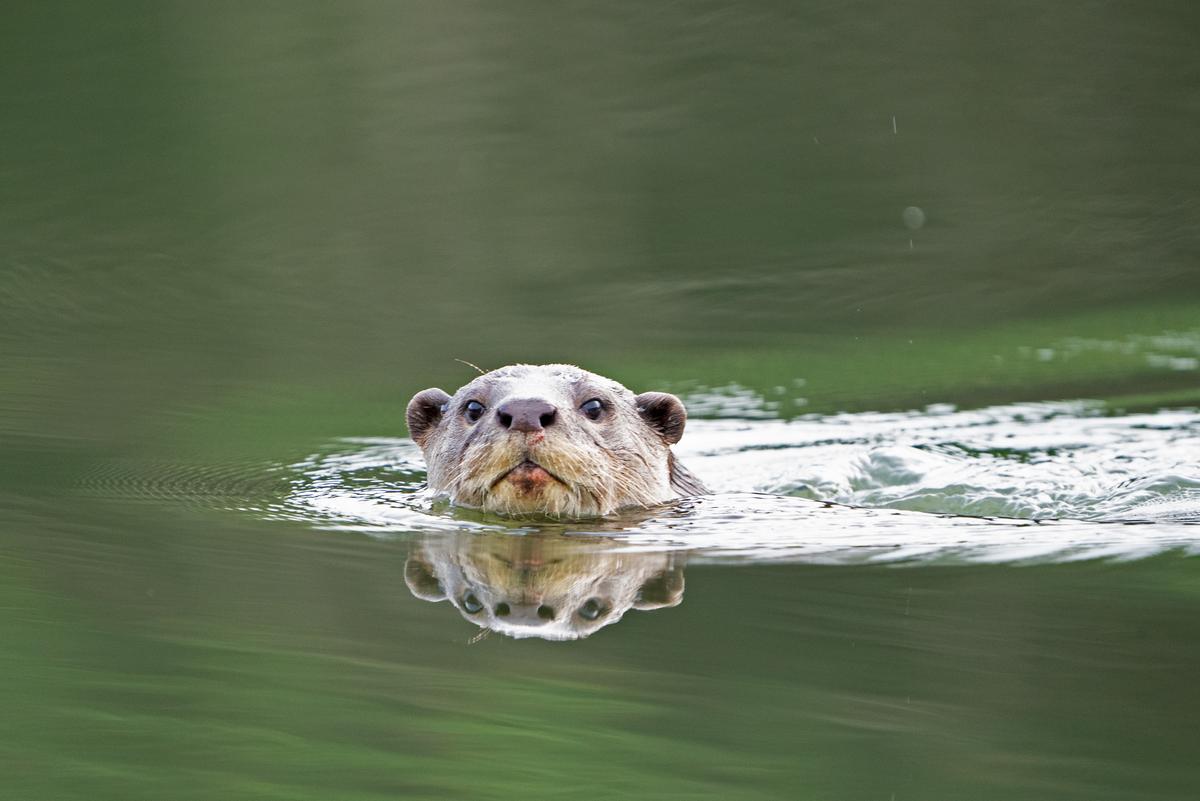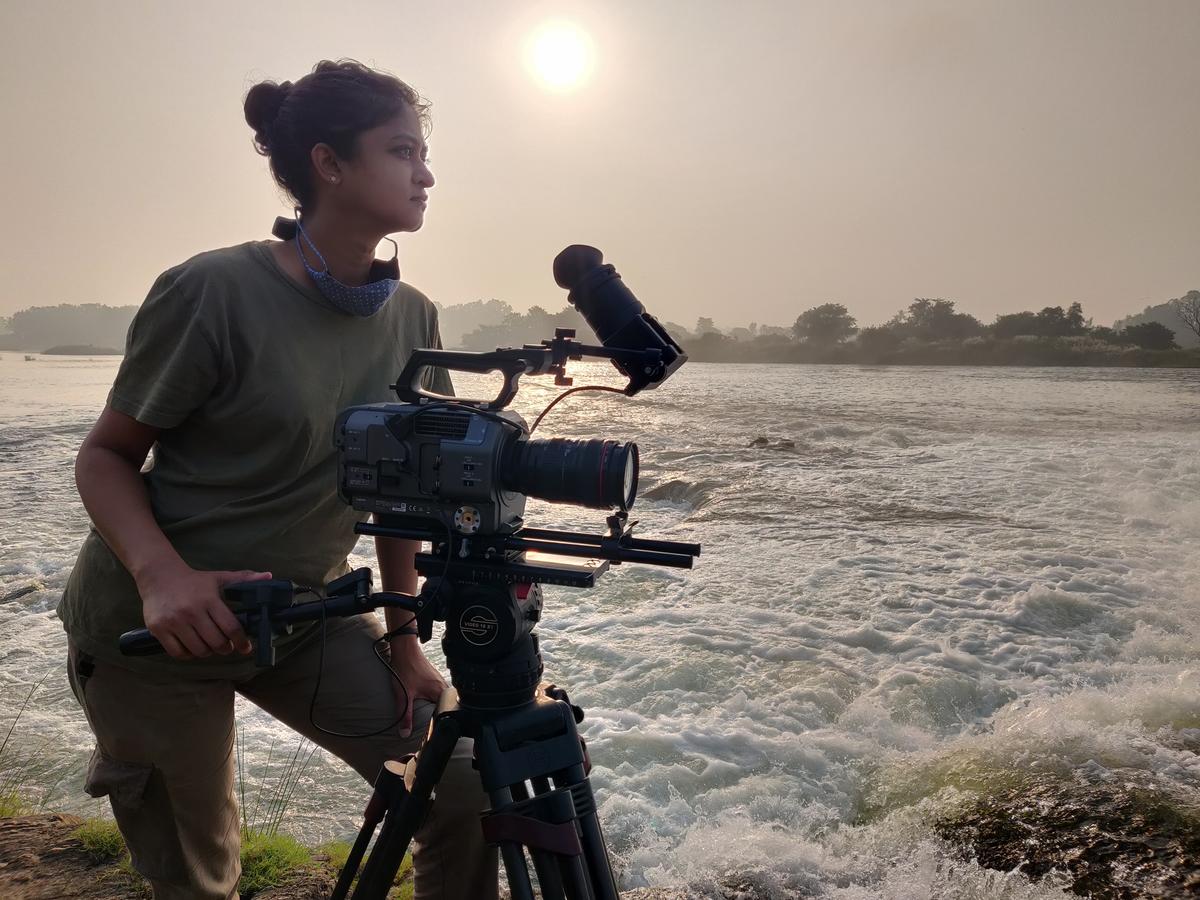Sugandhi Gadadhar still remembers her first encounter with a smooth-coated otter while on a family vacation alongside the Cauvery many years ago. As a child, the Bengaluru-based National Geographic explorer, photographer, and wildlife filmmaker often went to play on its banks. “It was one of those occasions when this thing (the otter) suddenly popped up from the water,” she says. “The memory of that stuck in my mind for years.”
Later, when filming other wildlife, she returned to that memory, “this mirage-like thing” she found herself unable to shake off. “I wanted to learn more about otters,” says Sugandhi, who has just released a documentary, My Otter Diary, co-created with her partner, wildlife filmmaker Raghunath “Rana” Belur. “That is when we started looking for otters to study in the wild.”
The fact that otters are not so easily spotted “because they are so shy and sensitive” lent to the challenge, she says; especially since “there were not too many documentaries focusing only on otters in India,” chimes in Rana. He adds that most of the studies around these carnivorous, semi-aquatic mammals were set in the region around the Chambal in central and northern India and in Goa. “There were surveys done along the Cauvery, but not too many had studied the behaviour, in terms of one family,” he says.
Otters aren’t easily spotted because they are shy and sensitive
| Photo Credit:
Sugandhi Gadadhar and Rana Belur
My Otter Diary does precisely that, offering insights into otter behaviour, the threats and challenges they face and the complex relationship they share with the humans who inhabit the same patches of the river they do by following a female otter, Maya, and her family. “That is what interested us: just spending time with them to understand what they do, how they behave, what their relations are and how they are feeling,” explains Rana. “Rather than going around the river or going to multiple places and looking at them, we just thought of looking at one family’s point of view.”
How it began
Rana and Sugandhi, the co-founders of Aranya Parva Creations, a production company specialising in natural history documentaries, began thinking about otters back in 2018. They had been making a short film on bears for the Karnataka Forest Department, shooting along the Tungabhadra river, close to Hampi and the Daroji Sloth Bear Sanctuary, recalls Rana. Since the Tungabhadra Otter Conservation Reserve, India’s first otter conservation reserve, was created in this area, they started exploring for otters here, but they soon had to give up on this idea due to “different logistical reasons,” says Rana. “So, we started looking at different places, one of which was along the Cauvery.”

Otters’ movement patterns depend on many things
| Photo Credit:
Sugandhi Gadadhar and Rana Belur
It also helped that they already knew people who had studied or worked along this stretch, one of whom was the wildlife biologist Nisarg Prakash, who has conducted surveys and written about the otters along the Cauvery. Through Nisarg, they met Shivanna “Shivu”, a fisherman who lives and works along the river Cauvery, who, with Sugandhi herself and the many otters, is a crucial character in the documentary. “We also needed to navigate the river and were looking for someone who could take us boating,” he says. Once they started boating with Shivu, they began enjoying his company and his wry sense of humour, so they asked him to work with them, explains Rana. “He would wait for us in the mornings and take us out daily. ”
Life by the river
In 2020, after spending nearly two years traversing the Cauvery, looking for signs of otters, they found Maya and her family. “It was around the time of the pandemic, so we actually took a house in a local village there and stayed in that village for the next five years, instead of travelling up and down,” says Rana.
They fell into a routine there, something that the film also captures: leaving home at 5-5.30 am to reach a spot at the crack of dawn, waiting for Maya and her family to appear. “While you know that this is when they come out or return to their den, they don’t always stick to that pattern. It was not every day that we saw otters, so that was a challenge,” says Sugandhi, while Rana chips in, saying that otters’ movement patterns depended on many things, including when the fishermen lay out their nets. “Some days, we would stay the whole day, some days we would wait until we got a gut feeling that they had come and gone, and would not come back that day,” he says.

Sugandhi Gadadhar still remembers her first encounter with a smooth-coated otter
| Photo Credit:
Sugandhi Gadadhar and Rana Belur
Over the next five years, they would stick to this routine, garnering footage of otters feeding, playing, mating, fighting and bonding, to tell a deeply compelling story of this beautiful animal, currently classified as Vulnerable by the IUCN Red List of Threatened Species. My Otter Diary, the research of which was supported by the National Geographic Society, TVS Motor Company and Globetek, also explores a more universal theme in a nuanced way: the negative impact of current “development” models on wildlife and indigenous communities, often pitting them against each other. “Otters and fishermen have been living together ever since man took to fishing, but the problems they are now dealing with are different,” explains Rana. The Cauvery, which is under stress due to a combination of factors, now holds fewer fish, which “both the fishermen and otters are trying to get to, so that is where the conflict is arising from,” he says.
My Otter Diary is a new documentary on smooth-coated otters
| Photo Credit:
Sugandhi Gadadhar and Rana Belur
This 52-minute-long film, which has been co-produced by Oxford Scientific Films and is being distributed by All3Media International, hopes to kickstart a conversation around these issues, raise awareness about otters and simply have more people rooting for Maya and all the otters, says Sugandhi. Otters are apex predators in the riverine ecosystems they inhabit, like tigers in forests, and therefore, play a key role in maintaining the health of this ecosystem. But many people simply do not know enough about them, she states. “We want the conflict between otters and fishermen to at least come down, if not stop. Both are victims, but they have not caused the situation,” she says. “So, we want these conversations to begin and hopefully some action to happen.”
My Otter Diary will be screened at Bangalore International Centre on June 7, 11 am to 12.30 pm.
Published – June 06, 2025 11:26 am IST